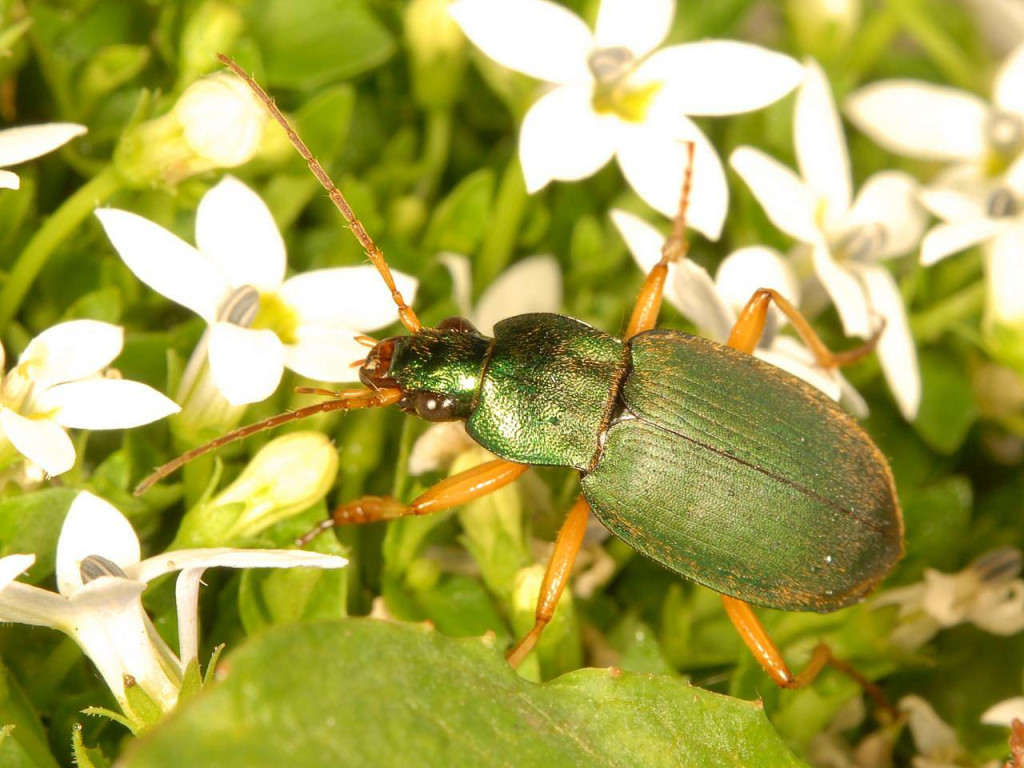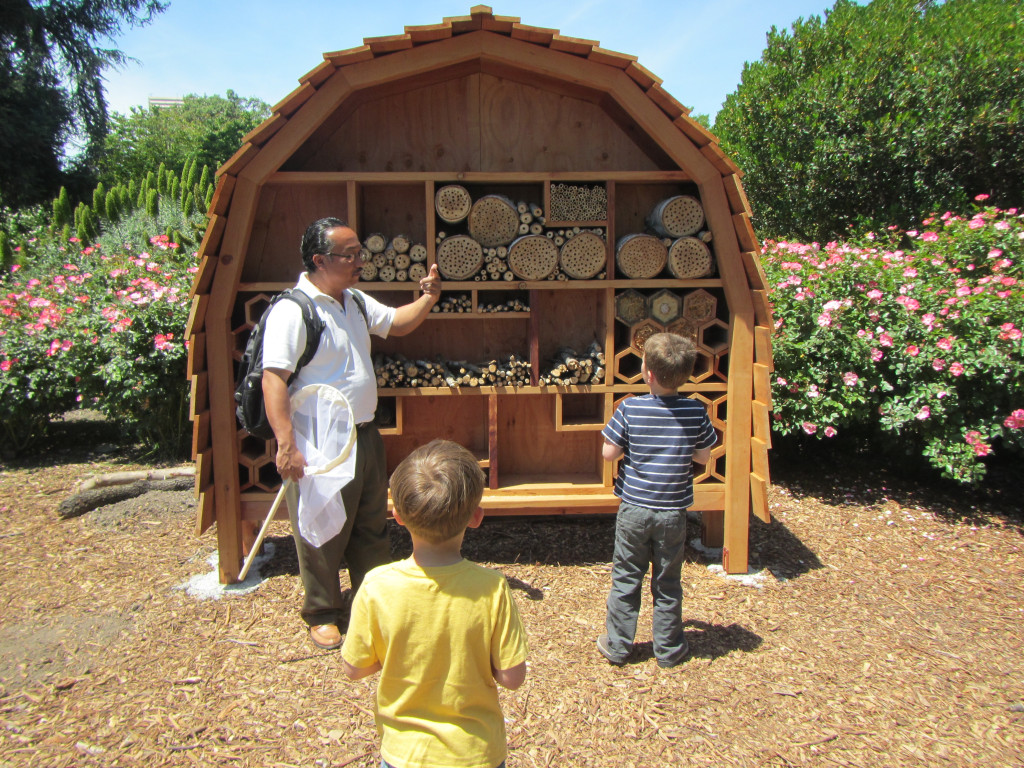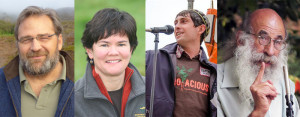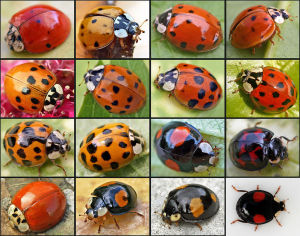Eddie Dunbar is the guy you can call when you’re having the most pressing bug identification question. He’ll know the answer.
A former insect exterminator for product testing at Clorox, Dunbar has since found his life’s calling as the founder of the Oakland-based Insect Sciences Museum of California (ISMC), an organization that that promotes insect literacy in a world that’s mostly repulsed by anything with more than four legs.
Dunbar taps into people’s strong feelings about insects.
“The same impulse that makes us want to squash a bug can also inspire us to pull out our loupes and a field guide,” said Dunbar, a mostly self-trained insect expert.
Oddly enough, you can’t make an easy living showing off bugs. So Dunbar’s day job is in the City of Oakland’s public works agency, where he heads the technology learning center. And of course, he can’t check his entomophilia at the door. In an agency better known for laying down asphalt and fixing sewer pipes, Dunbar has used his position to create insect habitat on the city’s expanse of public lands.
And he’s impressed people along the way.
“I met Eddie when he was in parking enforcement for the city of Oakland,” said Jim Ryugo, the Public Works building services manager. “Then I discovered he was a bug guy, had a website, and I thought, ‘Wow! You do all of this in your spare time?’”

The Pollinator Posse
Insect-lovers have a habit of finding each other, even within a large city bureaucracy. Tora Rocha, Oakland’s parks supervisor, joined forces with Dunbar when she started a group called the Pollinator Posse.
“At first it was just me raising caterpillars at home,” said Rocha. “It didn’t start out terribly structured, but other people working for the city got interested after they heard me talking about it and wanted to do it, too.”
Rocha turned to Dunbar for help in launching pollinator gardens for butterflies and bees at Lakeside Park and elsewhere. The program also encourages people to raise native butterflies and other insects that are critical to pollinating flowering plants.
“Eddie helped us get the Pollinator Posse off the ground by promoting us through social media and generally getting the word out about our group,” Rocha said. “He’s an amazing communicator and he’s great at connecting people. I had no idea so many people were into bugs before I met him.”

The goal is to create habitat corridors in the city’s urban core for insects and other species to move around. Dunbar said public works and ISMC dovetail nicely in this regard.
“The GIS mapping I use to send out work orders to public works employees has translated well into mapping locations where pipevine is planted. This way the ISMC can track potential food corridors for the pipevine swallowtail, a type of butterfly we’re trying to re-introduce to the Bay Area.”
A skittery path
Dunbar said his interest in insects began when he was a kid, but his career has taken a long and skittery path. At age 21, he was tossed out of UC Berkeley while working (too slowly) towards an entomology degree. Distraction was apparently the problem.
“Once I got to college and realized there were all these classes I could take to learn about how we interact as humans, that became a major focus and another passion,” recalls Dunbar. “I was taking way more sociology than entomology classes – the dean didn’t like that!”
Somewhere along the way he worked for Clorox, testing out products for insect extermination. Breeding mosquitoes and 27 strains of German cockroaches was too much to bear, even for this bug-lover. Apparently, no one likes mosquitoes.
“It was a kind of an emotional hazard walking into the breeding room knowing I would get bitten,” Dunbar said. “But I got to work with bugs, and ended up learning quite a bit from the researchers and pest management people I worked with.”
In 1994 he was brought on board as a senior word processor specialist for UC Berkeley’s insect biology department (no one hires word processors anymore). Then he won a grant to start a program called CityBugs and began cataloguing insects on a website and posting photos taken through a microscope to serve as a field guide to Bay Area insects.

“We were the best online resource for bug identification for a while. I would find my pictures all over the place on other people’s sites,” he said.
Reaching the people
Now he teaches people about insects and promotes citizen-science entomology through hikes, lectures, Facebook, a permanent display at the Rotary Nature Center at Lake Merritt, and the ISMC website and roving tabletop museum.
Dunbar also created an outdoor insect-based science curriculum for elementary school students that led to professional development with teachers.
“I called it ‘Take it Outside’ since that’s the first thing a teacher usually says when a student walks into a room carrying a bug,” Dunbar said. “This program was about encouraging educators to take their lesson plan outdoors. There’s an amazing variety of life you can find in a schoolyard.”
Citizen scientists and amateur photographers are the force behind ISMC’s latest ambition: a 5-year project that will result in the Insects of the San Francisco Bay Area field guide in 2017. Last year marked a revision of the Lake Merritt and Greater Oakland Insects digital guide, consisting of 229 color photographs identifying 144 insects commonly found in the area.
When asked if he’s ever run into a dearth of public interest in insects, Dunbar shakes his head ‘No.’
“In all my years of doing this, what surprises me most is that people from all walks of life have some ‘bug story’ they yearn to tell,” he said. “Whether they’re a die-hard bugger or an entomophobe, something about insects inspires them to tell it all when the occasion arises.”
Do you like bugs too? Get involved in Dunbar’s Insect Sciences Museum of California.





